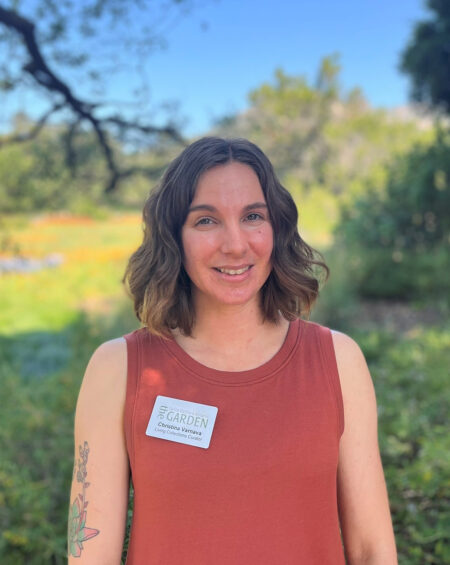Living Collection

Our Living Museum
Every Plant Has a Story To Tell
The plants growing in Santa Barbara Botanic Garden make up our Living Collection. Like a piece of ancient pottery or a painting in a museum, our plants are an accessioned collection. This means we have a detailed record for each plant in the Garden. We started to keep records of our collection in 1934 and they tell a story about each plant including where it came from, how long it has been here, and more. These stories are what make a Living Collection distinct from an ordinary garden. Our Living Collection is a resource for gardeners and a tool for scientists, and the plants are ambassadors to the public, bringing awe-inspiring awareness from around California to the Garden.
Nearly 1,000
Unique species, subspecies, and cultivars growing in our Living Collection at the Garden.
1934
Our oldest cataloged plant,
a bigcone Douglas fir (Pseudotsuga macrocarpa), was planted this year.
160 Feet
Our tallest tree is a coast redwood
(Sequoia sempervirens).
Native Plants in the Garden

Yellow pond lily (Nuphar polysepala) plants grow in wetlands throughout the state of California, although they are more common in the northern parts of the state. This collection was made in 1957.

Annual arroyo lupine (Lupinus succulentus) species like this one help supply food for early emerging bumblebees (Bombus spp.).

The common name banana yucca (Yucca baccata) comes from their unusual fruits, which are soft and look like green bananas. Our specimens of banana yucca date back from the 1950s.

Horticultural varieties like Iris ‘Chocolate Candy’ (Iris ’Chocolate Candy’) are an important part of the Living Collection, especially since cultivars often go in and out of fashion without clear documentation. The work of plant breeders is preserved in these plants.

Stream orchid (Epipactis gigantea) is one of California’s native orchids. Stream orchids are found in freshwater habitats around the state, but be quick! They go dormant during the late summer.

The Meadow Section has been a site for experimentation throughout Santa Barbara Botanic Garden’s history. Annuals like farewell-to-spring (Clarkia amoena) self-seed and return year after year, creating a vibrant and diverse plant community.

Tidy-tips (Layia platyglossa)

Ferns like this coastal woodfern (Drypoteris arguta) are an ancient lineage of plants that have adapted to a wide variety of habitats including the chaparral and deserts.

Native milkweeds like this narrow-leaf milkweed (Asclepias fascicularis) are critical for the caterpillars of Monarch butterflies (Danaus plexippus).

Coyote mint (Monardella villosa)
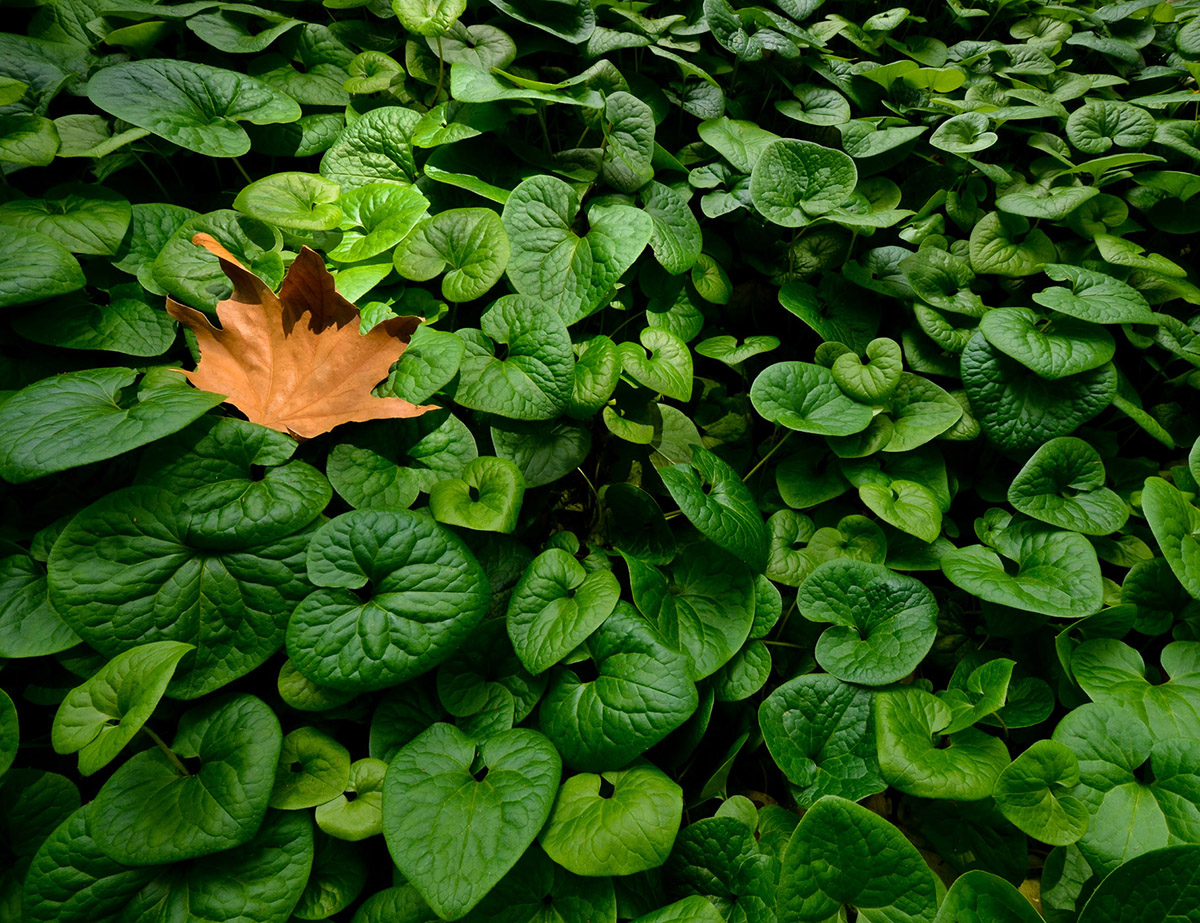
Wild ginger (Asarum caudatum) carpeting the Redwood Section (Photo: Ron Williams)

Humboldt lily (Lilium humboldtii)
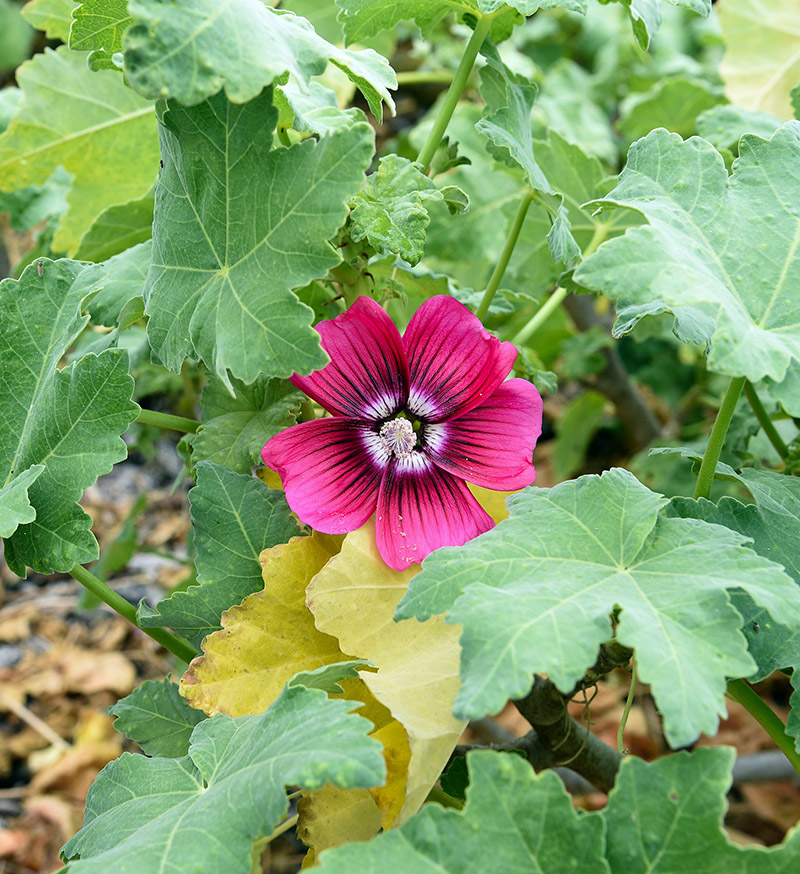
Island mallow (Malva assurgentiflora) (Photo: Denise Knapp, Ph.D.)

Giant coreopsis flowers (Coreopsis gigantea) (Photo: Greg Trainor)
Garden Explorer | Iris BG
How To Use Our Database
Our Living Collection features nearly a thousand different species of plants from throughout the state of California and the California Floristic Province (CFP). This area stretches from Oregon to Baja California, Mexico, and reaches inland to the Sierra Nevada. The CFP is recognized by scientists as a biodiversity hot spot, with many plant and animal species found nowhere else on Earth.
The Garden is built around an intact riparian area, Mission Creek. This living waterway supports many spectacular plants that have been growing in Mission Canyon prior to the foundation of the Garden, including coast live oaks (Quercus agrifolia), massive sycamores (Platanus racemosa), big leaf maples (Acer macrophyllum), white alders (Alnus rhombifolia), and California bay laurels (Umbellularia californica).
For information on each of the plants in our Living Collection, access our database. In it you will find a species or a plant growing in the Garden and any reference photos we have. You’ll even see where it grows so you can plan your next visit.
Taxonomic Collections
Endless Variety
The Garden is home to two taxonomic collections, featuring many species from a closely related group of plants. These collections are useful for comparing traits, growth habits, and the timing of flowering and fruiting.
Read More
Our Manzanita Section is an example of a taxonomic collection, meant to display the incredible diversity of manzanita (Arctostaphylos) species native to California.
Our other taxonomic collection is focused on liveforevers (Dudleya), a diverse group of succulents found throughout California. Liveforevers are ideal plants for a living collection, since their succulent leaves and thick stems are not easy to preserve in other types of botanical collections. Although our collection was impacted by the Jesusita Fire in 2009, our team is working to restore it and we continue to add new species.
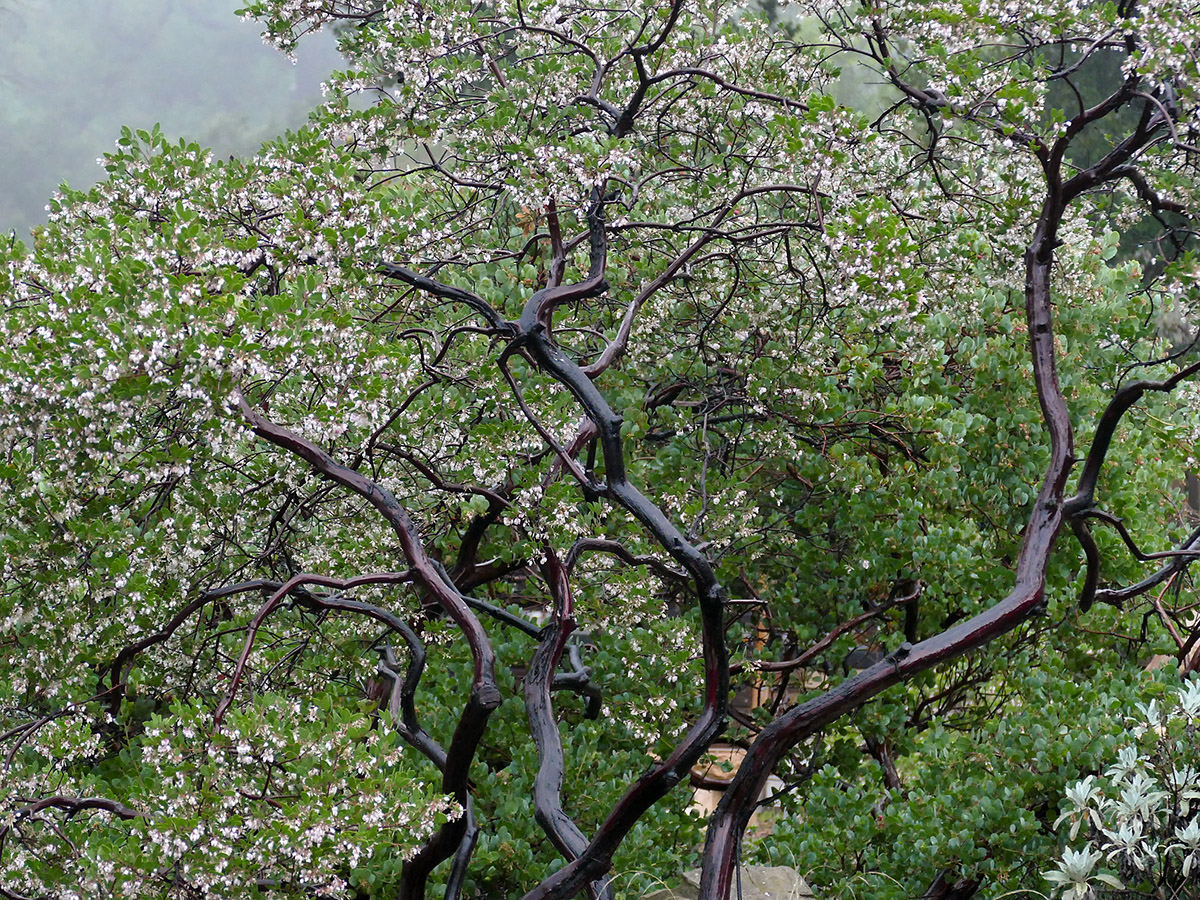
Raiche’s manzanita (Arctostaphylos stanfordiana ssp. raichei) (Photo: Randy Wright)

Liveforevers (Dudleya spp.) are charming native succulents that are especially diverse and unique on the California Channel Islands. Santa Barbara Botanic Garden is working to understand their complicated family tree, and to recover California’s rarest species. (Photo: Denise Knapp, Ph.D.)
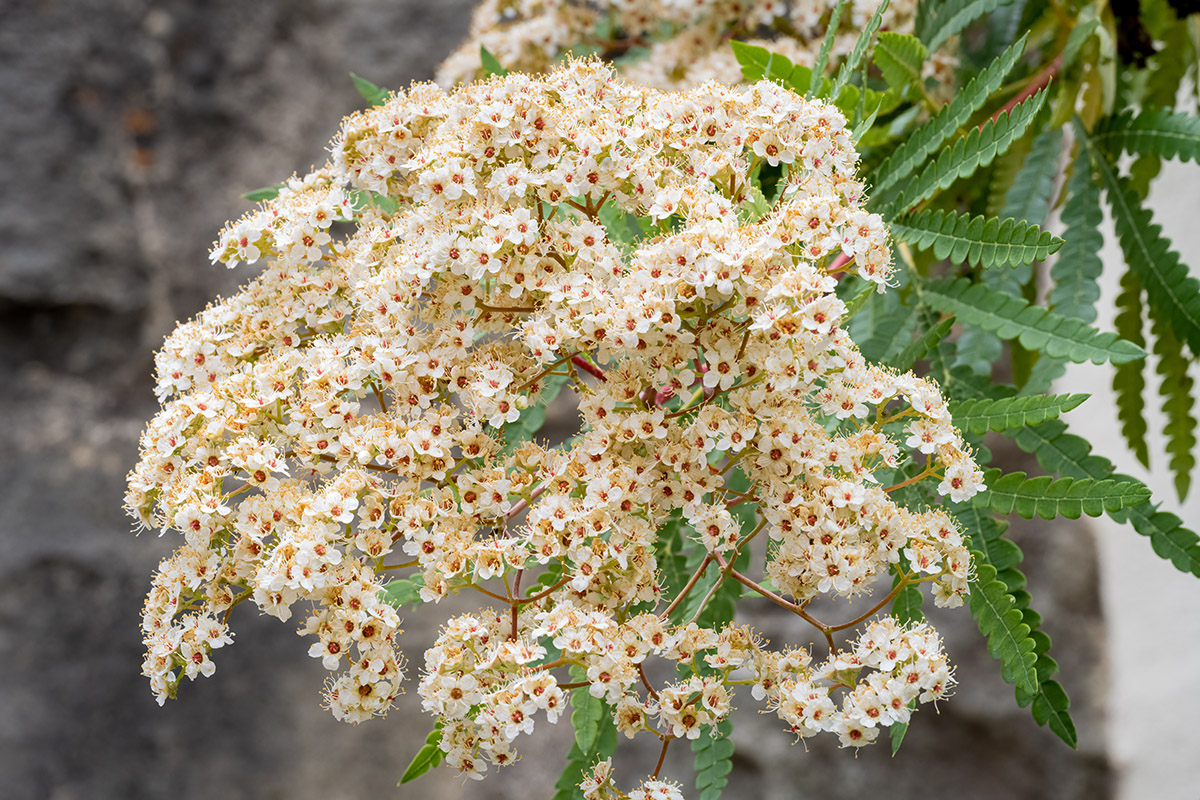
Santa Cruz Island ironwood (Lyonothamnus floribundus ssp. aspleniifolius) in bloom (Photo: Greg Trainor)
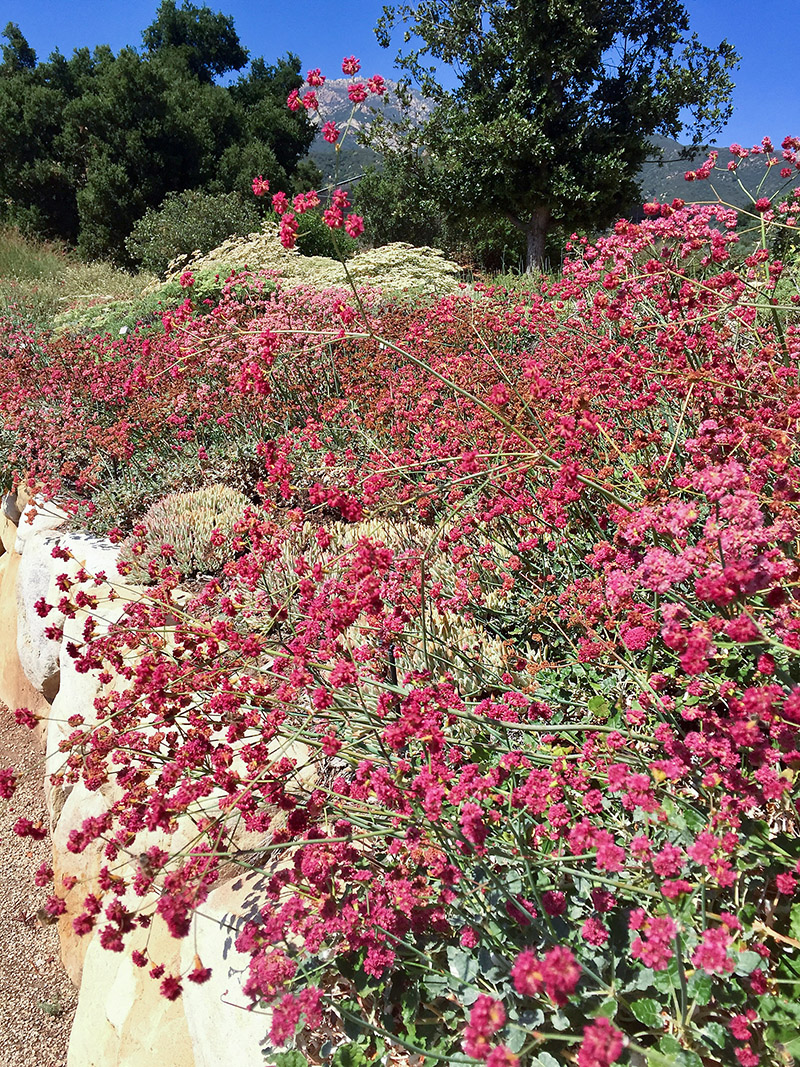
Buckwheat (Fagopyrum) in the Island View Garden

Island mallow (Malva assurgentiflora) (Photo: Denise Knapp, Ph.D.)

Giant coreopsis flowers (Coreopsis gigantea) (Photo: Greg Trainor)
The Galapagos of California
Plants of the Channel Islands
California’s Channel Islands are an archipelago of eight volcanic islands. These islands harbor unique plants and animals, many of them found nowhere else in the world.
Read More
For decades, botanists from the Garden have closely studied the plants on these unique islands. Over time we have built up the plants in our Living Collection as a resource for scientific study and a living gene bank.
We have over 200 species of plants growing in our grounds collected directly from the Channel Islands, including some of the rarest plants in California and the largest island oak (Quercus tomentella) ever recorded on the mainland. We continue to expand our Channel Islands collection so that everyone can experience the unique plant life from these special places.
Meet the Team
-
Living Collections Curator
-
Director of Horticulture and Operations
-
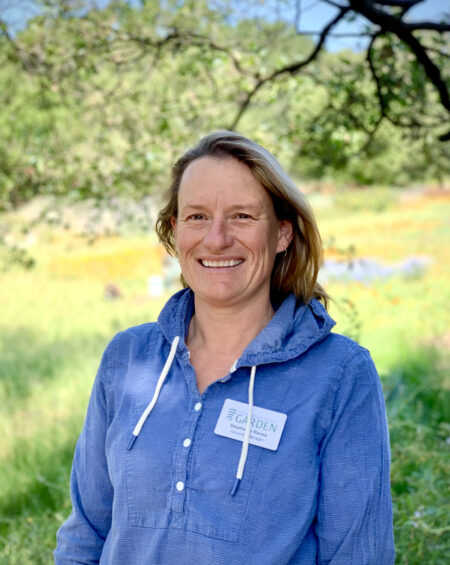 Stephanie RanesGrounds Manager
Stephanie RanesGrounds Manager
Access the Living Collection
We welcome scientific research that involves the plants of the Living Collection and will make an effort to accommodate inquiries. Unauthorized collecting of plant materials for any purpose is not permitted.
For questions regarding the use of the Living Collection or other collections information, please submit a request. Same-day requests typically cannot be accommodated.
 Donate
Donate